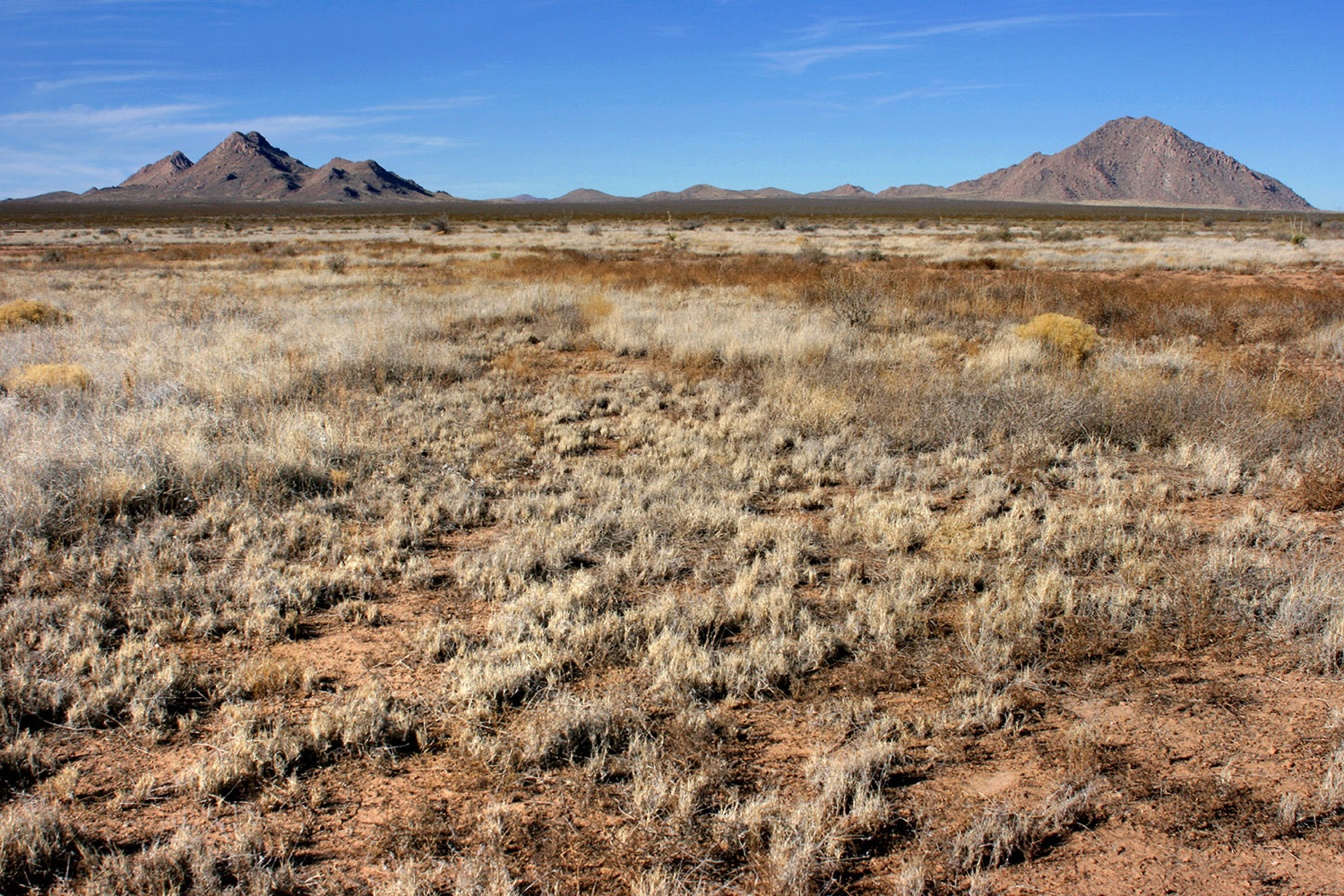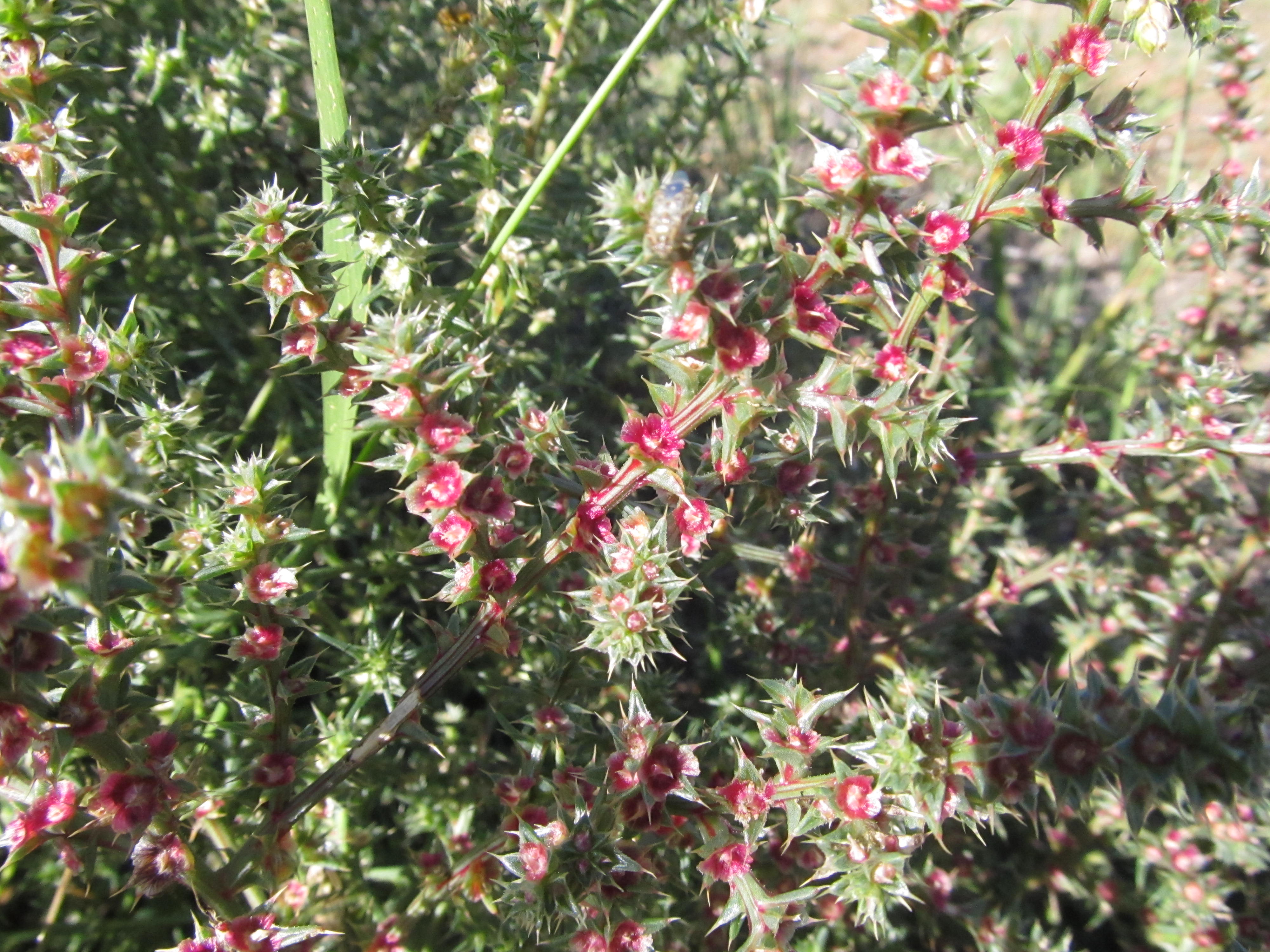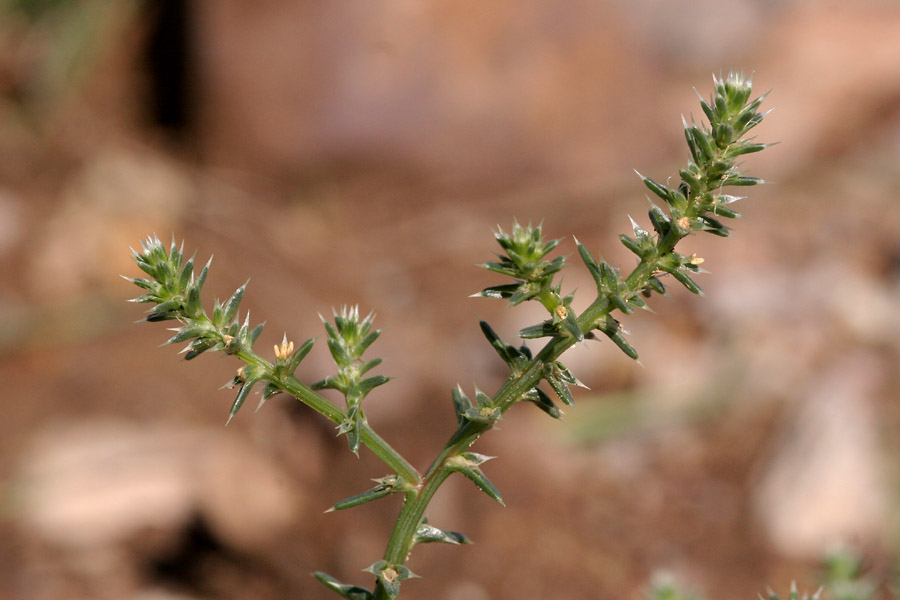Selected Plants of Navajo Rangelands
Tumbleweed

Russian thistle (Salsola tragus), barbwire Russian thistle (Salsola paulsenii), and spineless Russian thistle (Salsola collinea) are common annual weeds found in the southwestern United States. These plants are problematic in a wide range of areas, including agricultural, roadside, pasture, urban, and residential areas. They increase fire hazard and thrive in areas of high disturbance. Prevention or reduction of disturbance is critical in preventing establishment of these weeds!
Russian thistle grows from 1 to 3 feet tall. Its branched and rounded shape means it can be up to five feet wide. Found on nearly all soil types, it is salt resistant and grows on alkali soils. Russian thistle provides fair forage for cattle and sheep in the early spring, when leaves are soft and succulent, becoming worthless with maturity because of the sharp-pointed leaves. If it turns black at maturity and is softened by moisture it is good winter feed. Livestock can suffer injury from the leaves, which may accumulate nitrates, and may contain oxalates. It is an indicator of overused and unhealthy rangeland. It does not compete well with other plant species. When the plant is mature, it breaks off at the base and blows away, hence the name “tumbleweed.†This is how the seed is spread.
Young shoots of Russian thistle can be used as a potherb and seeds can be ground into meal. Russian thistle is sometimes harvested for hay and silage.





©2018 NMSU Board of Regents.
Individual photographers retain all rights to their images.
Partially funded by the
Western Sustainable
Agriculture Research and Education Program
(westernsare.org; 435.797.2257),
project EW15-023.
Programs and projects supported by Western SARE are
equally open to all people.